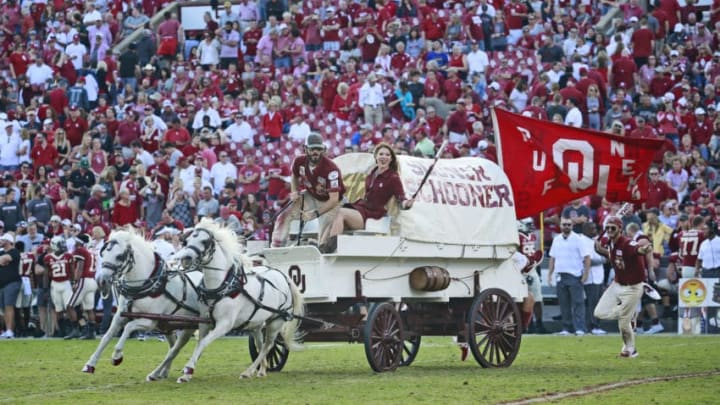The early part of the 1960s were not the best of times in the renowned history of Oklahoma football.
The Sooners’ overall record seven years into the 1960s decade was a very modest 39-31-2 by historic Oklahoma standards. This was a time in between the great Bud Wilkinson years and the Barry Switzer OU era of the 1970s and ’80s.
Switzer followed longtime Arkansas assistant Jim Mackenzie to Oklahoma in 1967 a year after Mackenzie was named the Sooners head coach. Switzer had been the running backs coach at Arkansas and was hired by Mackenzie as the Sooners’ offensive coordinator, but Mackenzie died following spring practice in 1967 and Switzer ended up working for a different head coach.
Chuck Fairbanks, who joined Mackenzie’s coaching staff as defensive backs coach in the latter’s one season leading the Sooners, was promoted to head coach following Mackenzie’s death.
Fairbanks spent six season as head coach of the Sooners before departing after the 1972 season to become the head coach of the New England Patriots in the NFL. Switzer then took the Sooner head-coaching reins, a role he would hold for the next 16 seasons winning more games at that time than any head coach in OU football history.
Fairbanks’ Oklahoma teams experienced three four-loss seasons, but those were sandwiched between three seasons in which his Sooner teams lost no more than one game each season and produced a record of 32-3 and won two Big Eight championships.
One of the four-loss seasons came in year four of the Fairbanks coaching era, in 1970, exactly a half-century ago this season.
The Sooners began the 1970 season ranked 20th in the Associated Press preseason poll and started out winning its first two game. But that was followed by losses in three of the next four games — losses at home to Oregon State and Kansas State, a lone win on the road at Colorado and, worst of all, a 41-9 pasting in its annual Red River rivalry showdown with Texas — leaving Oklahoma with a 3-3 record midway through the ’70 campaign.
Offensive coordinator Switzer introduced the wishbone offense that season, and while there were some hiccups offensively early in the season, by the time the second half of the 1970 season rolled around the Sooner wishbone offense was beginning to hit on all cylinders, foreshadowing what was to come over the better part of the next two decades.
Oklahoma rebounded the second half of the season, winning four of its remaining six games, losing only to conference champion and longtime league rival Nebraska, ranked No, 3 in the country at the time. The Sooners finished second in the Big Eight that season behind the Cornhuskers and accepted a bid to the Bluebonnet Bowl in Houston, where they were matched up against Alabama. The two teams played to a 24-24 tie.
The Sooners ended the 1970 season with a 7-4-1 record (5-2 in the conference) and right where they began, ranked 20th in the final AP Top 25. OU lost to rivals Texas and Nebraska but salvaged one rivalry win, defeating in-state rival Oklahoma State, and in convincing fashion, 66-6.
Jack Mildren was in his second season quarterbacking Oklahoma in 1970. Operating out of the run-heavy, triple-option wishbone offense, the Sooners didn’t put the ball in the air much. Mildren threw only 110 passes all season, completing 54 for 818 yards and seven touchdowns. He also gained 318 yards on the ground, including five rushing TDs.
Joe Wylie was the Sooners’ leading rusher with 984 rushing yards and 12 touchdowns, and Leon Crosswhite contributed another 568 yards on the ground. Interestingly, Greg Pruitt was the team’s leading receiver, catching 19 of Mildren’s passes for 240 yards and a couple of receiving touchdowns.
The following season, 1971, was the year of the famous Game of the Century between Oklahoma and Nebraska. The No. 1 Huskers defeated No. 2 Oklahoma in a back-and-forth thriller, 35-31. That was the only game the Sooners would lose that season. The top three teams in the final AP Poll that season were No, 1 Nebraska, No. 2 Oklahoma and No. 3 Colorado, all out of the Big Eight Conference.
